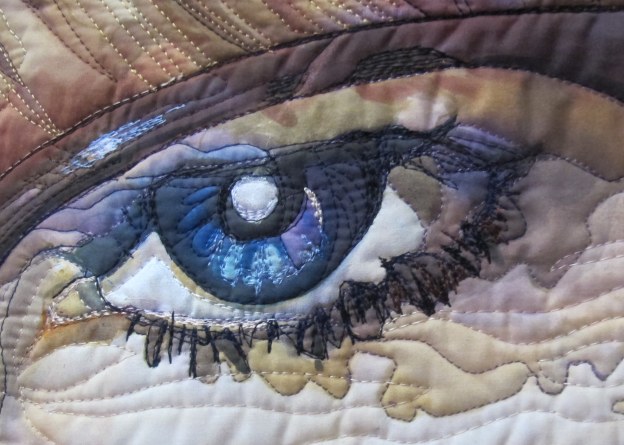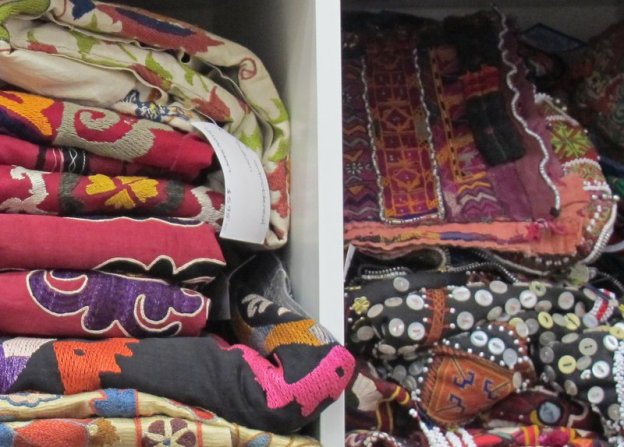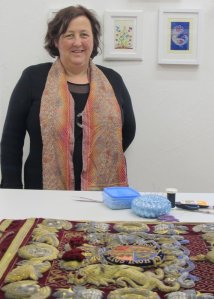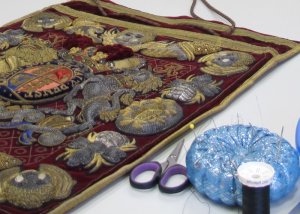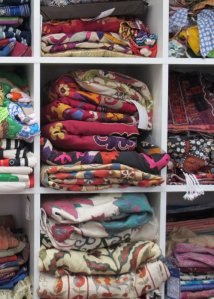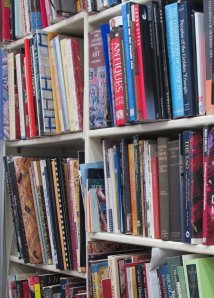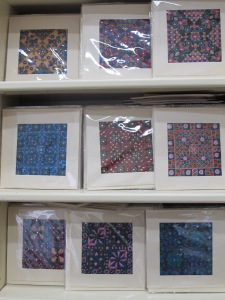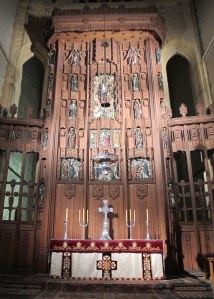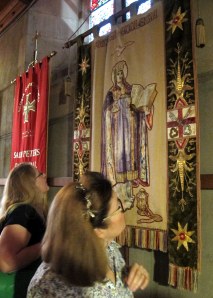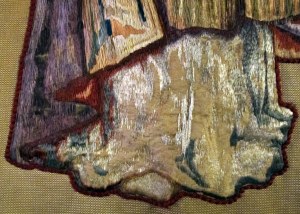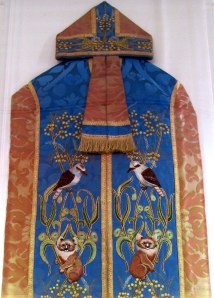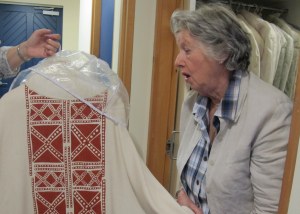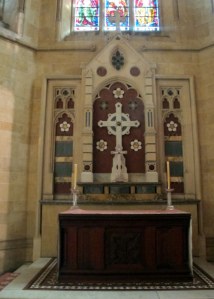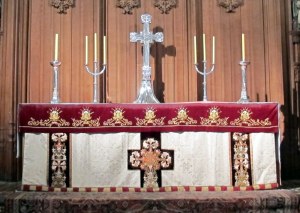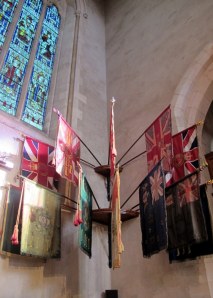The St Peter’s Cathedral, a magnificent building standing watch over Adelaide’s CBD, is home to many a treasure. Its grand interior with stained-glass windows, carved woodwork, mosaic floors, and historical banners is the perfect backdrop for the Telling Stories Exhibition.
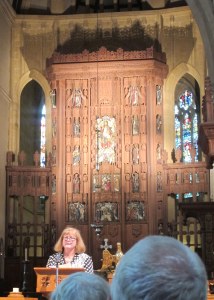
Julie Haddrick at St Peter’s Cathedral
This is a three-artist exhibition showcasing paintings by Maz Gill-Harper from Tasmania, clay sculptures by Mark Pearce from South Australia, and textile artwork by Adelaide based quilt artist extraordinaire, Julie Haddrick.
The theme Telling Stories encompasses the work of these three artists perfectly.
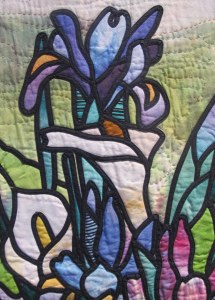
Maz Gill-Harper’s paintings depicting the parables as they appear in the Gospels are visual representations of the stories told by Jesus to his followers. It contains texts, images and symbols, turning each artwork into a spiritual journey rather than just a painting.
Telling stories as teaching.
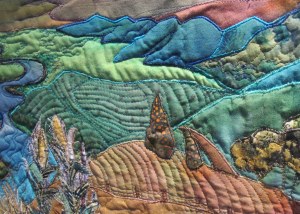
Mark Pearce’s sculptures depicting the apostles, grab the viewer’s heart and attention drawing you into the emotional life of each man. They radiate the spiritual path and soulful journey of each of these biblical characters.
Telling stories as a spiritual journey.
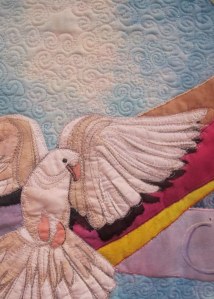
But it is Julie Haddrick’s work which shouts with joy. Her vast wall-hangings are filled with colour and life. Using hand-dyed, painted, printed and stencilled fabric, she creates visual feasts depicting God’s creation in all its glory. From the vast work encompassing all of the creation right down to detailed images of treasured feathers.
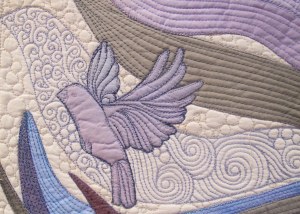
Julie uses symbols and metaphors to tell her stories. Her work is filled with detail – some of them meticulously sketched with layered fabric like the wedge-tail eagle, others only suggested in the quilted lines on the backgrounds and in the borders.
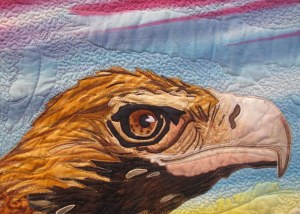
Julie’s work is influenced by the Japanese philosophy of Wabi Sabi which embraces transience, imperfection and the impermanent. She subscribes to the sentiment of ageing gracefully and appreciating beauty in decline. Her treasures include feathers, shells and broken shards of china.
Telling stories as worship.
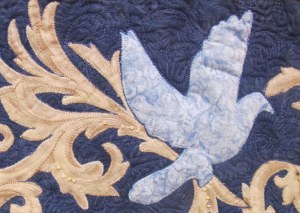
This exhibition forms part of The Adelaide Fringe and will be on display until March 5, 2017. The cathedral is open every day, with artist talks daily at 11 am, 1 pm, and 3 pm.
*All images were taken at St Peter’s Cathedral and depicts small details from Julie Haddrick’s work. Published with the artist’s permission.

